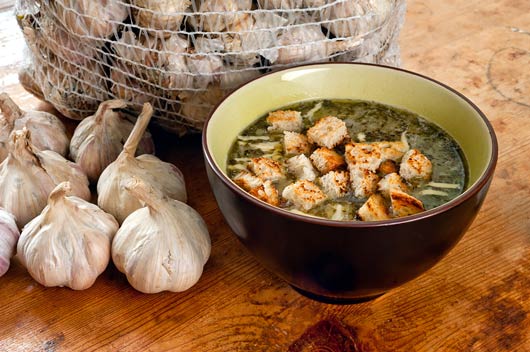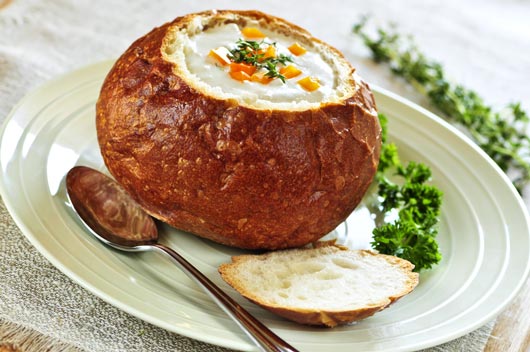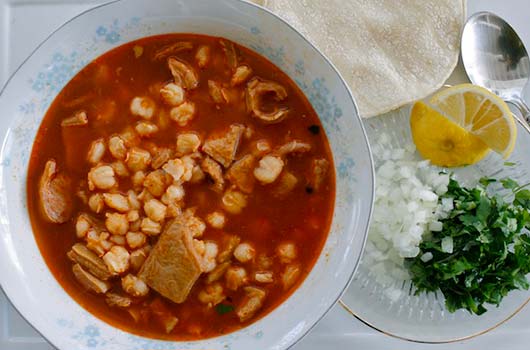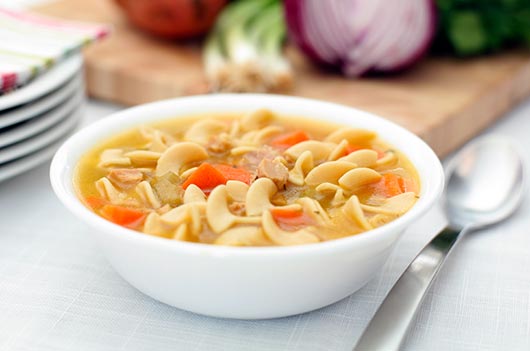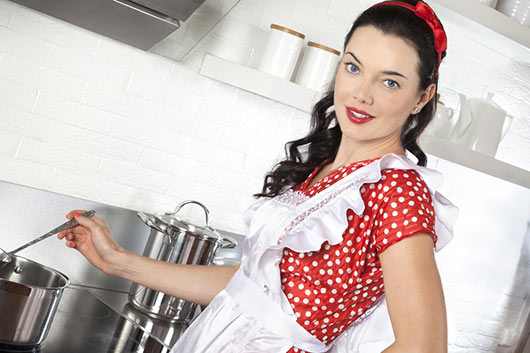
As the new year approached it’s not just about taking stock—but also making stock! With the weather getting chilly outside, it’s the perfect time of year to heat up your indoor cooking game with a culinary ingredient that warms you up literally and figuratively—with comforting and nourishing stock. And not just any stock, we’re talking about the BEST beef and chicken stock ever; a liquid treat that is amazing on it’s own or in a wide variety of recipes. But what exactly makes a stock better than just your ordinary broth? And why does it matter?
First of all, let’s discuss the difference between broth and stock, because many of us (guilty) use these terms interchangeably, and that’s incorrect. Broth is a soup base that results from cooking meat in liquid—think cooking raw chicken in a seasoned base. But stock is the result of cooking not just meat, but also bones and connected tissue and ligaments in a liquid until that liquid becomes a nourishing and flavor-packed dish. According to chef Alton Brown, the two liquids don’t look or taste the same because of how they are made. “A broth may be flavorful, but without bones there will never be substantial body,” he explains.
It’s no secret that a flavorful stock tastes amazing, but it also happens to be really really good for you. According to Dr. Amy Myers, a renowned leader in Functional Medicine and New York Times Bestselling author of The Autoimmune Solution, bone broth reduces inflammation, helps fight off infection and illness, promotes healthy skin, hair and nails, and calms the mind. Beyond that, “homemade bone broth contains all nutrients and minerals found in bones and tendons rather than just one or two found in pills. Slow cooking preserves the nutrients better than the high heat extraction used to make supplements.”
Read Related: Why is Everyone Talking About Bone Broth?
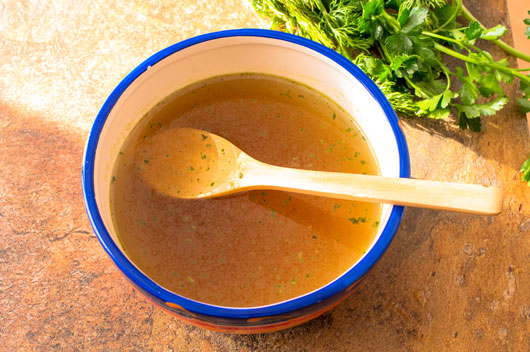
So how do you make this incredibly healthy, incredibly tasty and incredibly easy stock? It’s pretty simple actually. For making stock you’ll need a crock-pot or stock pot so that you can slow cook your stock and preserve all the nutrients. Next, you’ll need the essential ingredients (and any seasoning you are using), you’ll need our protein of choice, and most importantly, you’ll need time to do it right.
We all have preferences when it comes to the kind of stock we enjoy alone or in recipes, so think about your life and pick your poison wisely. We tend to prefer chicken stock, but there’s no denying that beef stock is equally rich and delicious, and even if you’re more in the vegetarian camp, veggie stock can be tasty and also very nutrient-rich. Regardless, once you select your meat, you’ll need not just the meat, but also the carcass including the bones. When it comes to chicken stock, you can opt for a whole chicken, or you can save the bones from a cooked rotisserie chicken, once you’re done enjoying the meat. Don’t stress out too much about what bones you use, in fact, if you’re making beef stock you can usually visit your local butcher and ask for beef “soup bones” to make stock and just use whatever is available that day.

If you are using chicken bones, you can add them directly to the stockpot along with your cooking liquid and seasoning. If you are using beef bones, there’s an extra step to achieve maximum favor. According to The Organic Kitchen author and blogger Linda Spiker, you need to “slow roast the beef bones (before adding to stock pot) in oven at 225 degrees for an hour and a half turning every 20 minutes for a richer flavor.” Once you are ready, simply put all of your ingredients in a stockpot starting with your meat, bones and water. Other ingredients typically include garlic, carrots, celery, onion, salt and pepper. Other variations include apple cider vinegar, thyme, bay leaves, leeks etc. You have a lot of options when it comes to the flavors you use, but the key is to make sure all of your ingredients cook together in your pot, for a minimum of 6-8 hours with all the meat, bones and vegetables submerged under water (and add water as needed). Remember, the longer you cook your stock, the richer it will taste, so while some recipes may call for 6-8 hours, more is more when it comes to stock.

When your stock is done cooking you need to remove all the solid and excess pieces to achieve a smooth and rich stock that you can enjoy or safe for future use. According to Ina Garten, aka The Barefoot Contessa aka our favorite culinary goddess, you need to “strain the entire contents of the pot through a colander and discard the solids. Chill the stock overnight.” To chill the stock, you can put it in a heatproof container and then submerge the container in a sink full of ice water to immediately stop the cooking process, then refrigerate overnight. The next day you’ll still need to do a little work—you need to remove the fat (which will be solidified) from the top of the stock and discard it. The stock is then ready to be reheated and used, or saved for future cooking adventures. You can keep stock in the refrigerator for up to 3 days, but for a longer shelf life, freeze the stock for up to 3 months. When you are ready to use it, simply bring it to a boil and enjoy in everything from soup to sauce and beyond.



